Mercedes-Benz Sudah Mempunyai Cita-Cita Pacuan Elektriknya Awal-Awal Lagi
Mercedes sudah melihat kepada kenderaan pacuan elektrik beberapa dekad yang lalu dengan pacuan elektrik 190 pada tahun 1990.
Baru semalam Mercedes-Benz mengumumkan kepada penonton global niat mereka untuk mendapatkan rangkaian kenderaan elektrik sepenuhnya, baik segmen kenderaan penumpang dan kenderaan komersial. Pengumuman itu dilakukan mulai jam 7.00 malam waktu Malaysia dan ia menjelaskan secara terperinci arah mereka untuk semua segmen, termasuk kenderaan AMG.
Walau bagaimanapun, kami yakin bahawa ramai di antara anda mungkin tahu mengenai hari-hari awal Mercedes dengan pacuan elektrik mereka. Sebenarnya, lebih kurang 30 tahun yang lalu. Ya, Mercedes berjinak menggunakan pacuan elektrik pada tahun 1990 dengan sedan 190e (model W201) yang popular.
Pada bulan Mei tahun itu, Mercedes-Benz mempamerkan 190 yang ditukar menjadi pacuan elektrik di bahagian pasaran inovasi di Hanover Fair. “Dengan cara ini, Mercedes 190, yang dari segi panjang dan beratnya hampir mendekati keperluan kenderaan elektrik, adalah kenderaan uji bateri yang ideal…
…Objektif utamanya adalah untuk menilai kesesuaian fungsi semua komponen dalam situasi yang realistik dengan semua getaran, pecutan dan turun naik suhu yang dialami dalam operasi harian,” jelas brosur yang dikeluarkan pada masa itu.
Mercedes-Benz EQ bermaksud kenderaan elektrik yang dibuat oleh jenama bintang terkenal. Kenderaan ini dirancang berdasarkan perkembangan terkini dalam bidang permotoran elektrik, kuasa elektronik dan sistem bateri yang boleh dicas semula kerana teknologi ini telah berkembang pesat dalam beberapa tahun terakhir.

RELEASE: The electric 190s were used to test different drive configurations and battery systems. The energy storage devices tested were mainly sodium-nickel chloride or sodium-sulphur high-energy batteries which had a significantly higher energy density than classic lead batteries. However, the working temperature of both systems was around 300 degrees Celsius. The group expressing the greatest interest at this industrial fair were representatives of the trades.
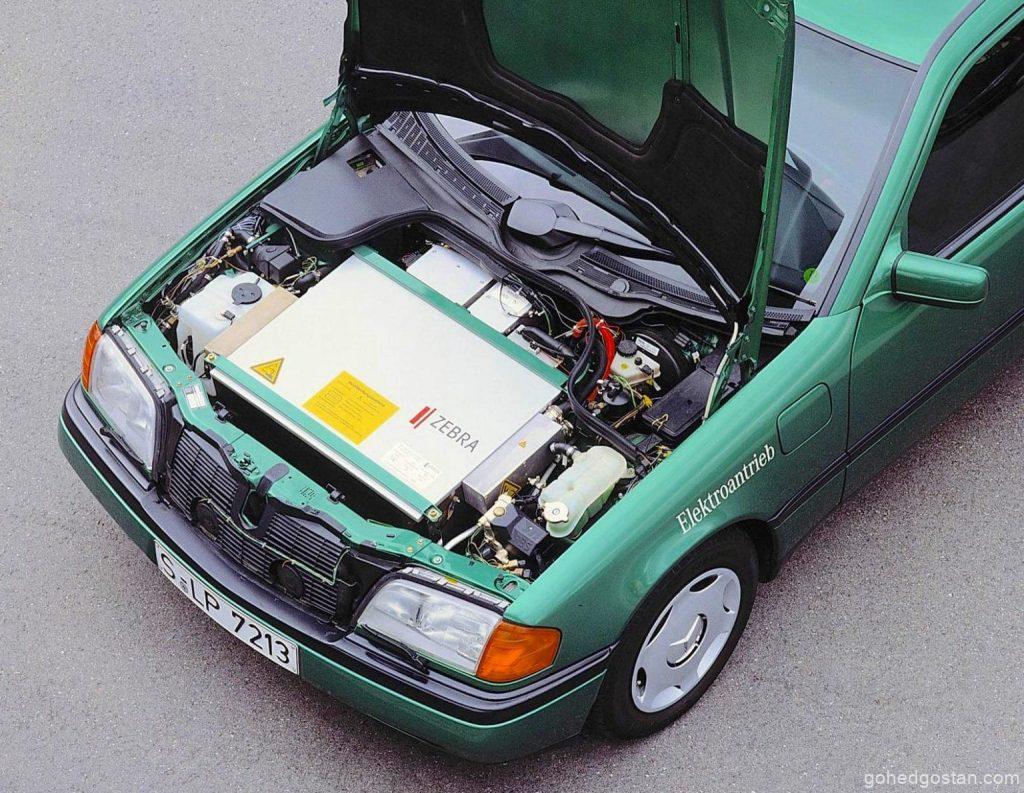
There was a considerable shift in this just under a year later, when, in March 1991, Mercedes-Benz displayed a more advanced vehicle in the context of the internationally orientated Geneva Motor Show.
“The car is still a fully-fledged five-seater with almost unchanged effective space and with tried-and-tested Mercedes-Benz safety features.”
Each of the rear wheels of the vehicle presented in Geneva was powered by its own DC motor energised by permanent magnets with a peak power of 16 kW (22 hp) each, so the total power output was 32 kW (44 hp). Energy was supplied by a sodium-nickel chloride battery, and regenerative braking returned energy to the power pack during braking actions.
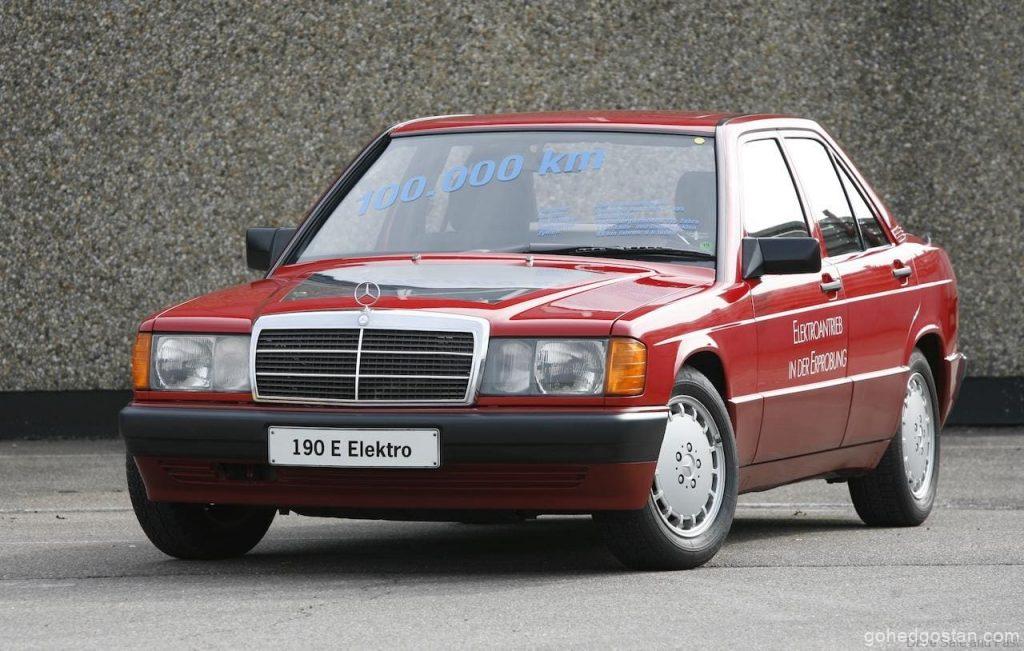
A particular advantage of the concept was the elimination of weight-intensive mechanical components, so the additional weight compared to a series-production vehicle with a combustion engine was only 200 kilograms.
The issue of electric cars experienced an upswing at that time as a result of the laws passed in California, for example, to introduce zero emission vehicles. Mercedes-Benz was not the only manufacturer to take steps in this direction. From 1992 onwards, some of the results were seen on the German Baltic Sea coast: a large-scale field trial was conducted on the island of Rügen and continued through to 1996.
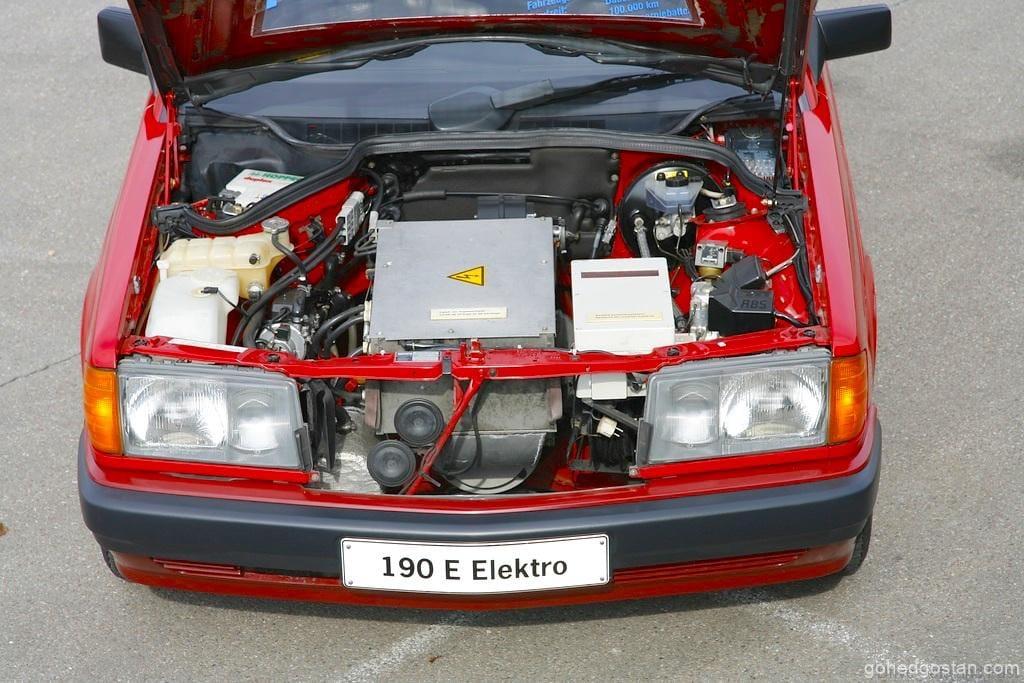
The German government funded the project to the tune of DM 60 m. The aim of the exercise was to test electric vehicles and energy systems including their batteries in everyday practice. A total of 60 passenger cars and vans of several brands were involved.
Among other things, Mercedes-Benz sent ten W 201 model series saloon cars, which had previously been fitted by hand with drive components in various electric motor-and-battery combinations in Sindelfingen, to Rügen.
Special recharging stations using solar collectors were available during the field test with a view to testing the environmental concept in a consistent manner because only electricity from renewable sources can be considered completely CO2 neutral.
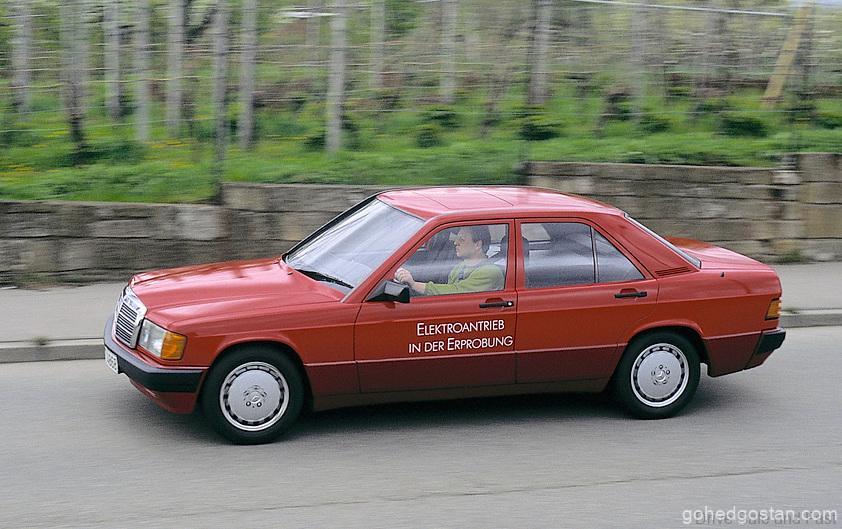
100,000 kilometres in one year with an electric test vehicle
The pioneering 190s were driven by test participants on the island of Rügen: these various individuals, including taxi drivers, used them in normal everyday life. There were hardly any problems – the W 201 cars went about their work completely inconspicuously and reliably.
One of the vehicles was used particularly intensively and achieved a peak usage rate of around 100,000 kilometres in one year. “The results provide new insights into battery service life, the number of possible discharge and charge cycles, range, energy consumption and reliability,” summarised the Mercedes-Benz brochure. In the following years Mercedes-Benz applied the electric drive concept to other passenger cars.
The question remains as to why electric vehicles are only now becoming established and why they did not take off on the basis of the projects of that time. Battery service life, range, recycling, charging infrastructure and vehicle price are quoted as just some of the keywords in a Mercedes-Benz press release from spring 1991 as challenges faced by e-mobility on the way to series production.
Many of the answers to these questions have only become available today, as can be seen by the range of hybrid vehicles offered by Mercedes-Benz and, of course, the EQ electric brand. Projects like the 190 with the electric drive have helped to provide these answers.
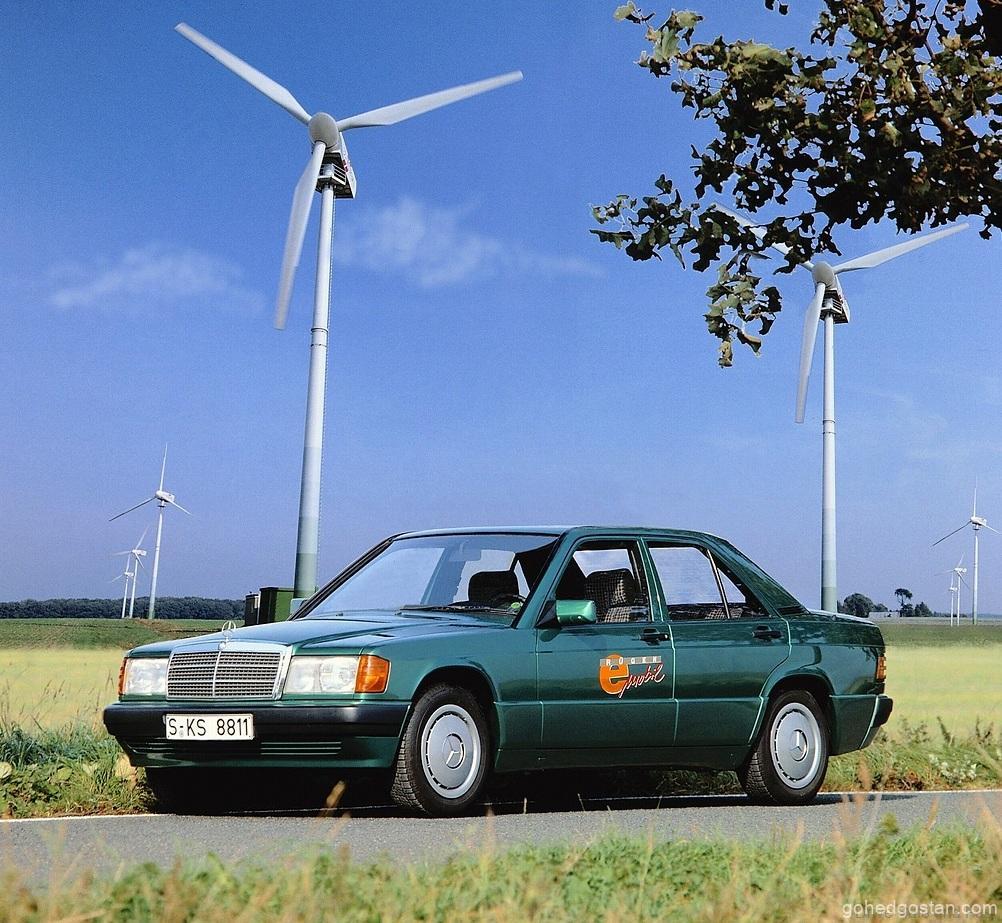
All the knowledge gleaned by the experts in the 1990s has contributed to the comprehensive knowledge pool of vehicle development on which engineers draw in developing today’s vehicles. In addition, some of the engineers that worked on the W 201 with the electric drive are still active in the company’s electric vehicle development and are thus involved in the latest projects. This innovation movement can only go in one direction: forwards to bring the future into the present.

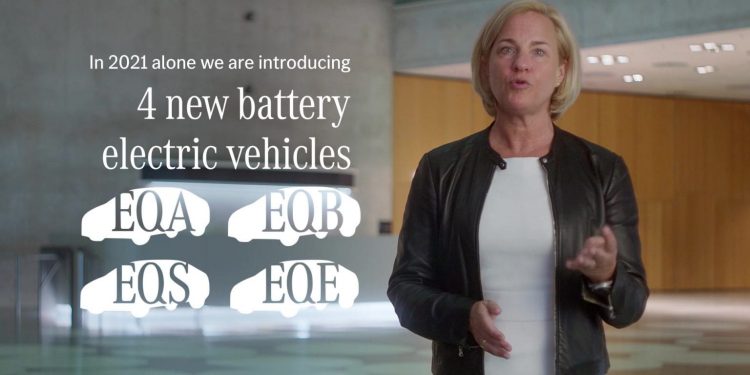

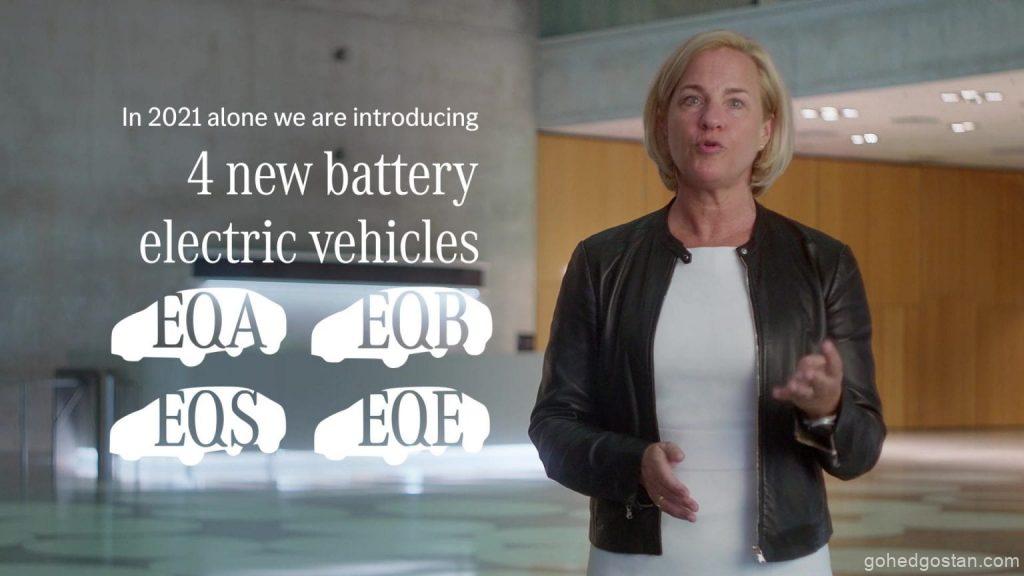
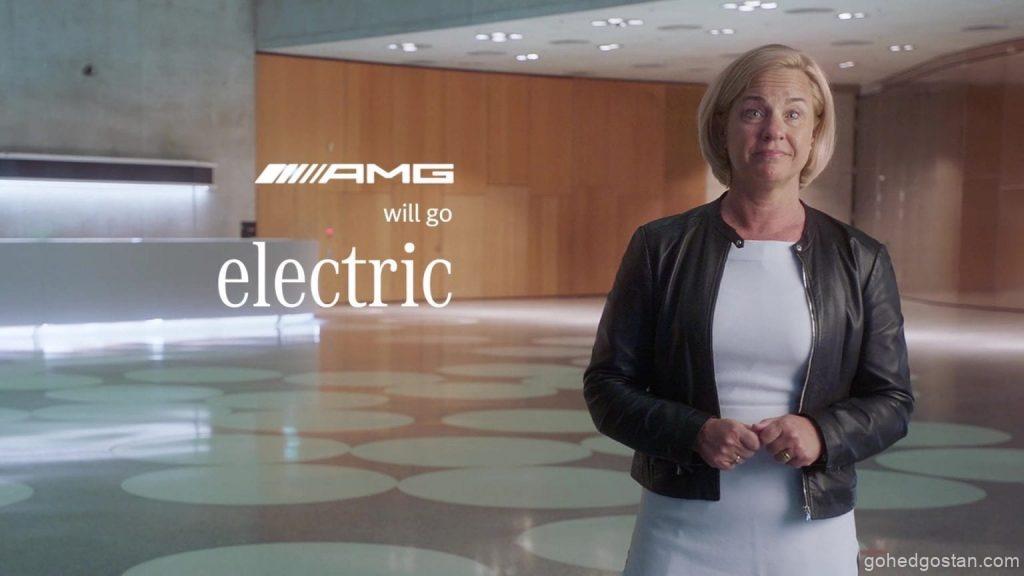
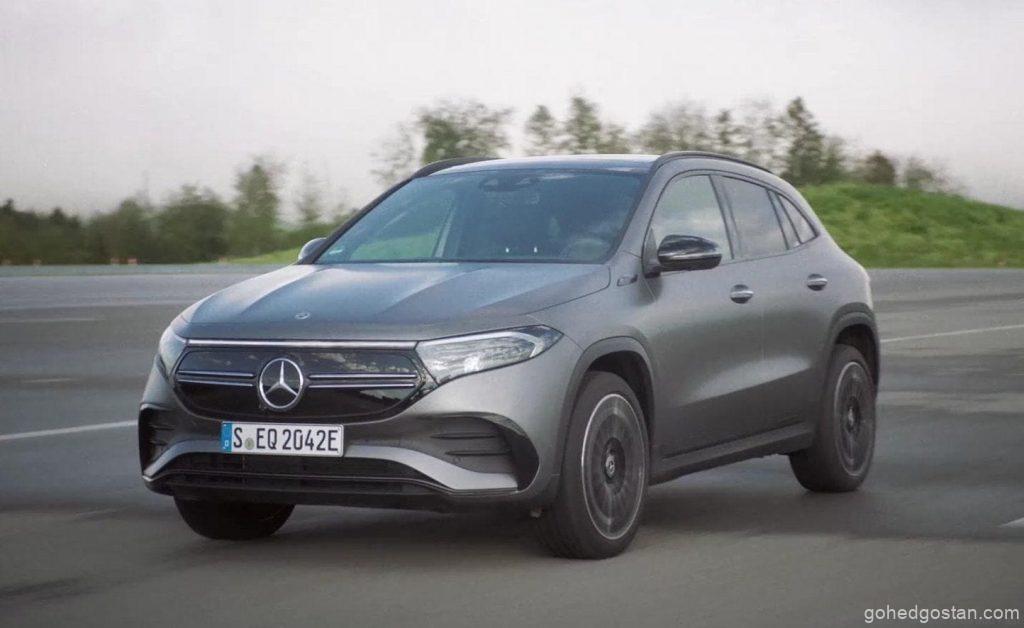
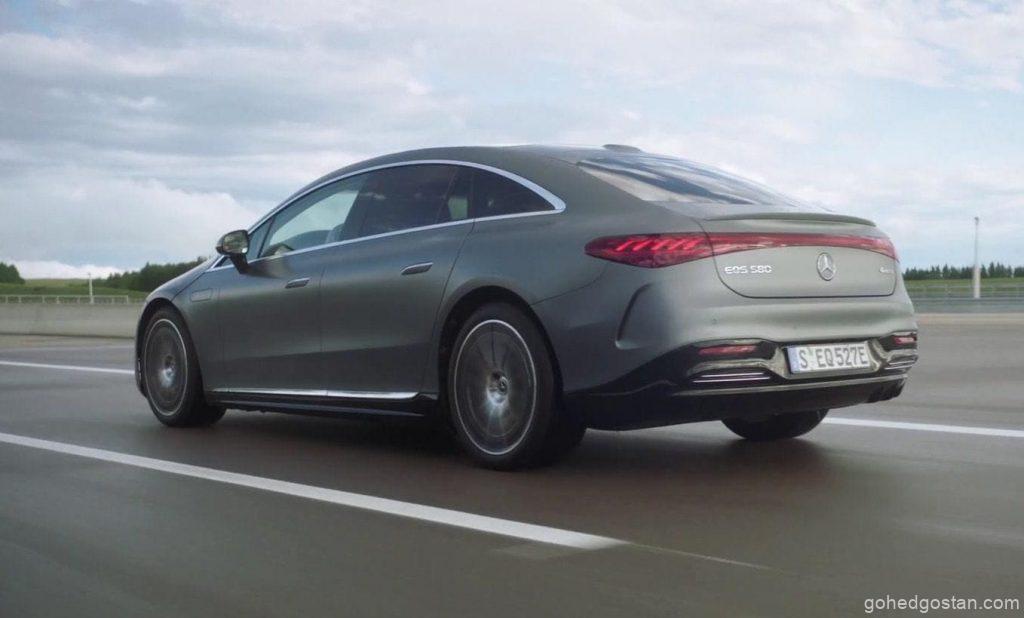
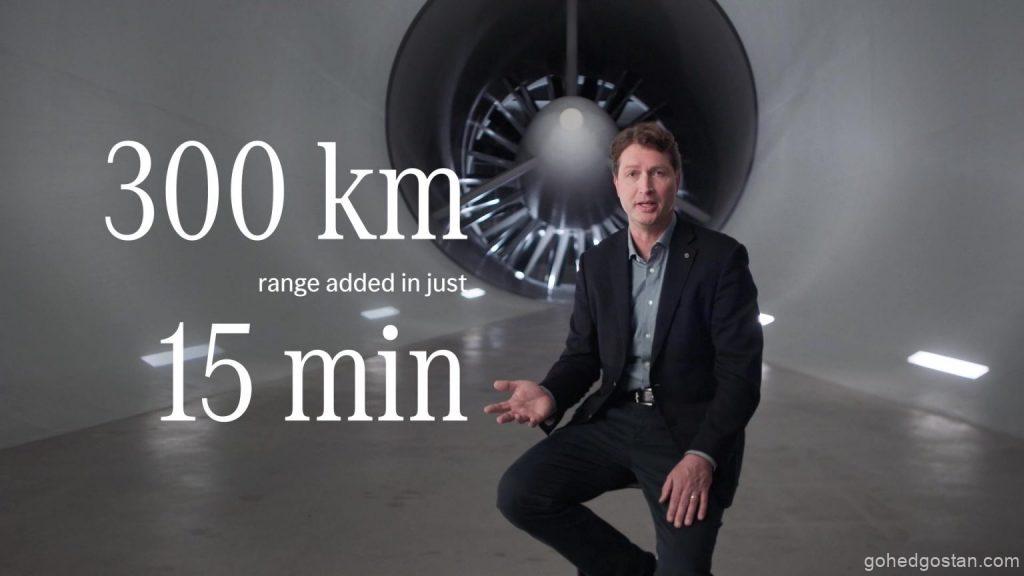
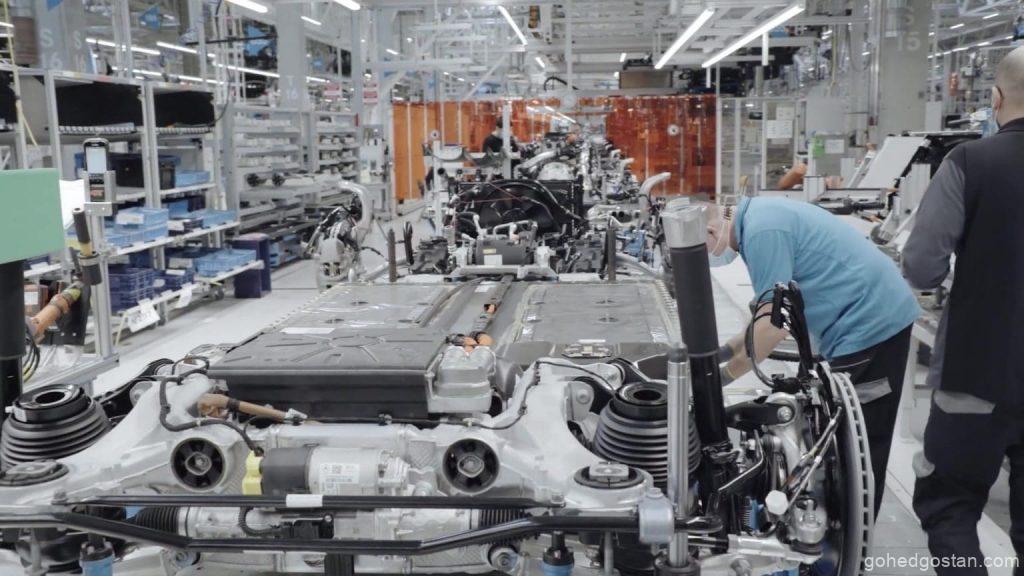
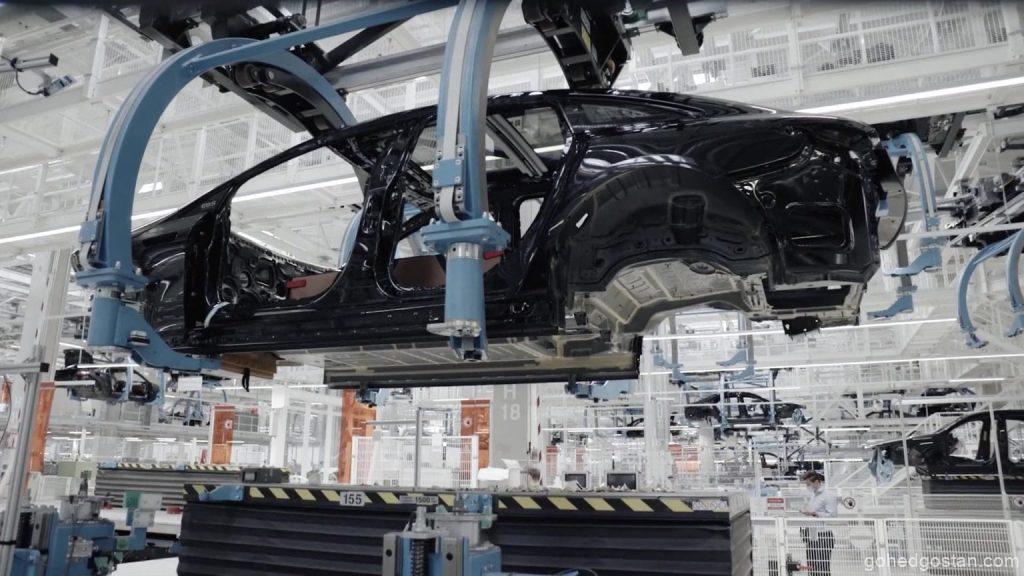


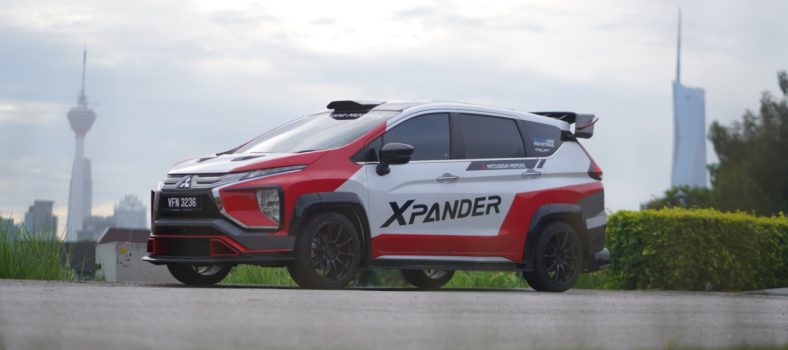

No Comment